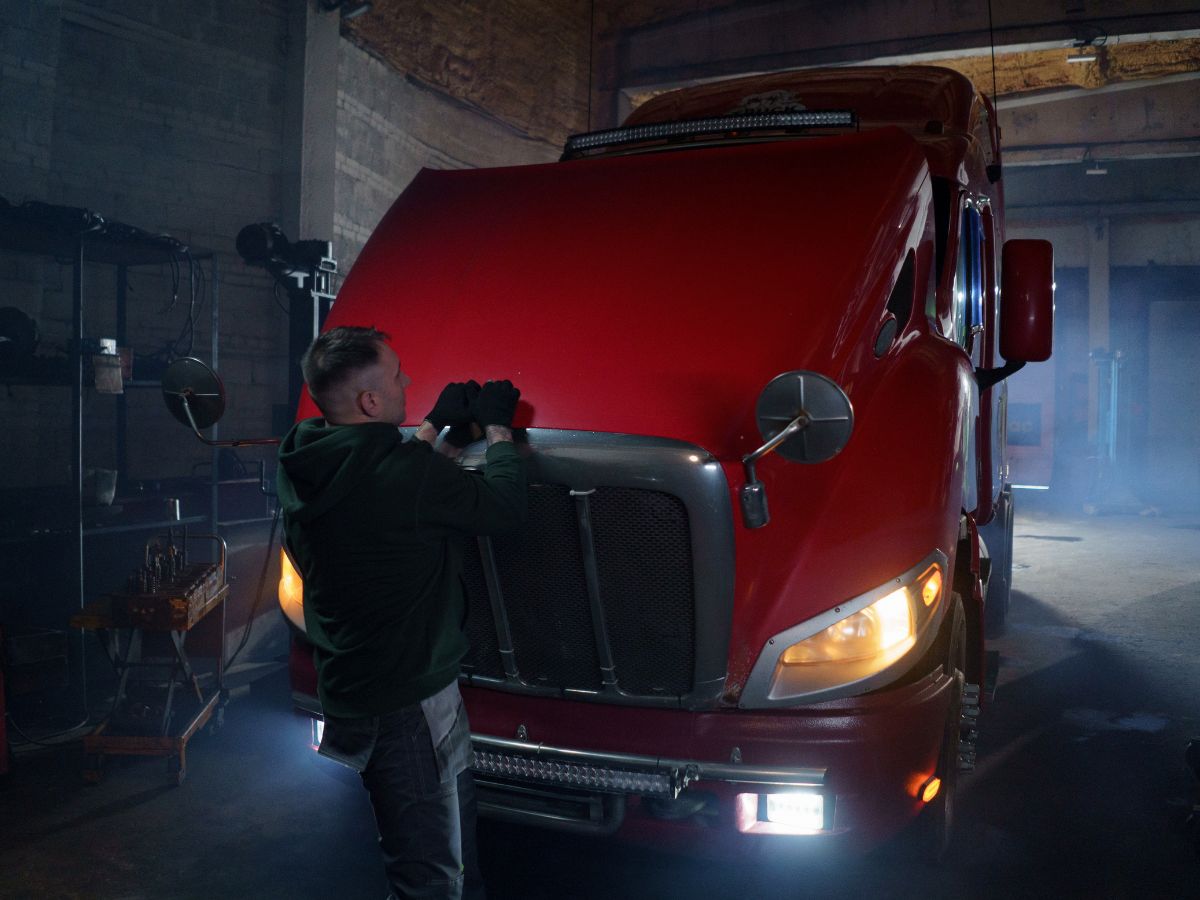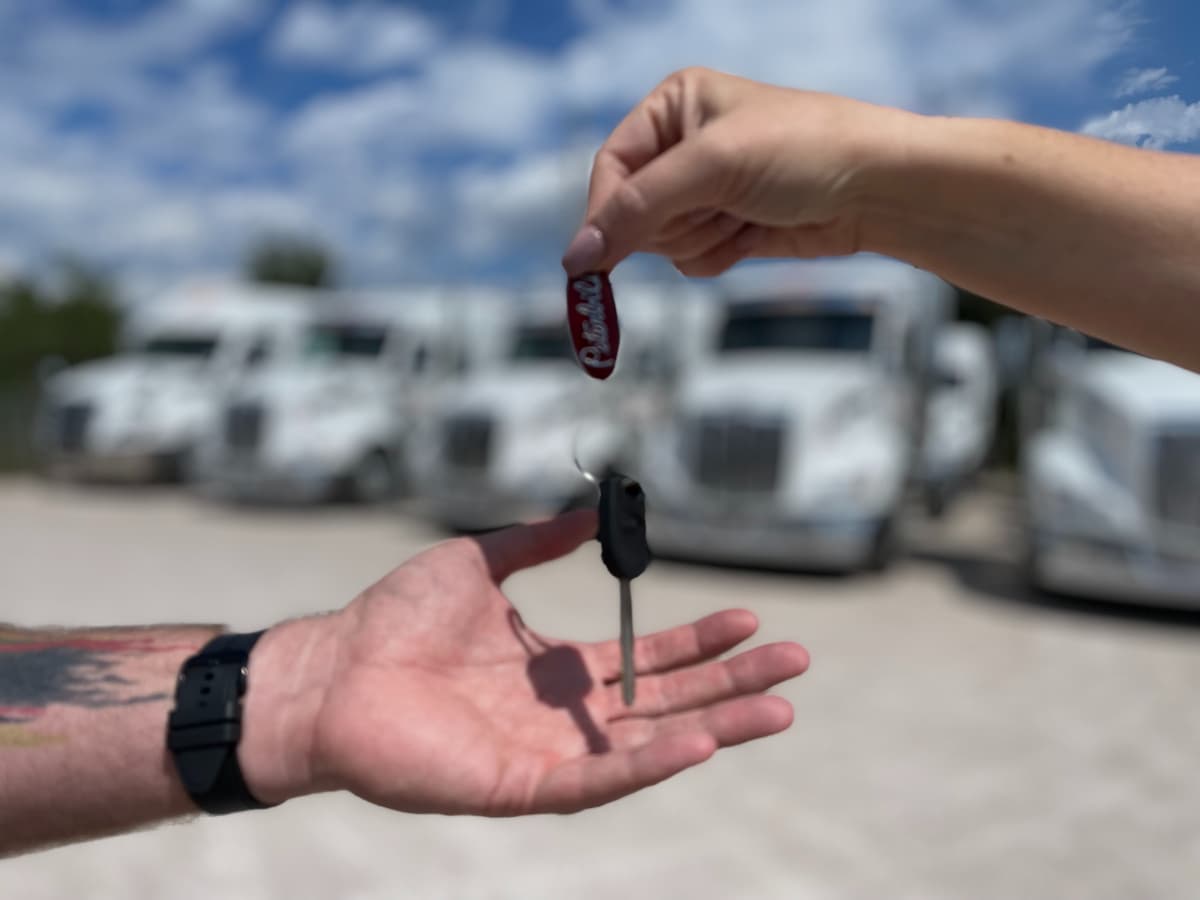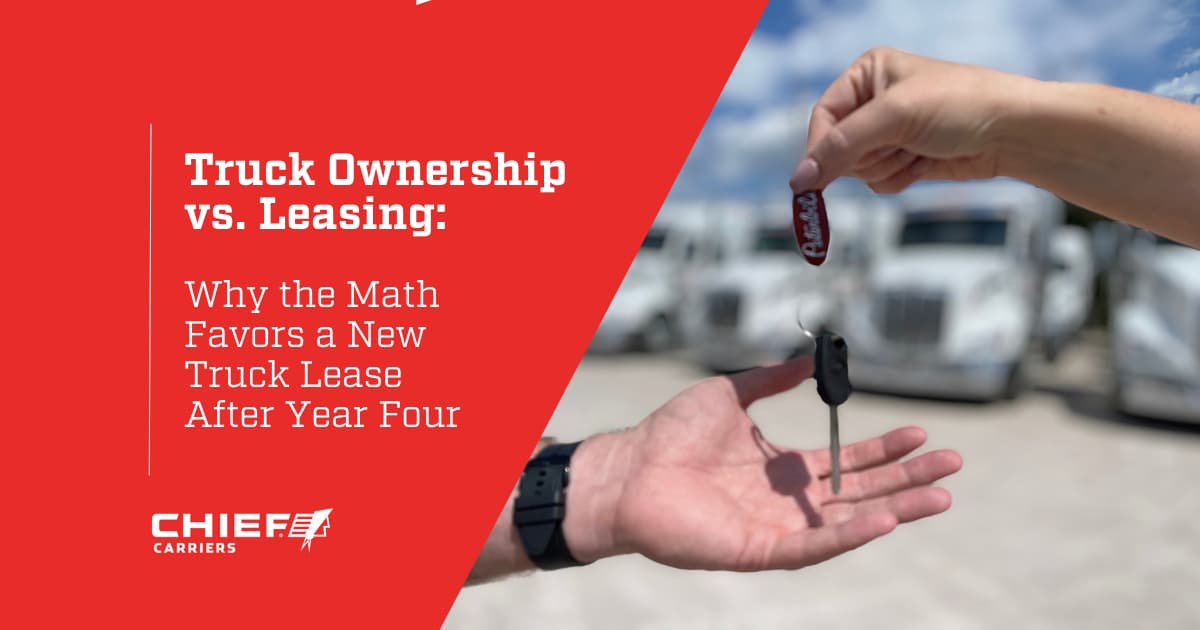The Financial Reality of the Commercial Truck Trade Cycle
Are you a professional driver grappling with the classic dilemma of truck ownership vs. leasing? At Chief Carriers, we know that the primary financial difference between owning or leasing a truck centers on the maintenance curve, not just the monthly payment.
While long-term ownership offers the potential for equity, the average semi-truck maintenance costs rise sharply once the original manufacturer’s commercial truck warranty expires, typically around the fourth year or 400,000 miles. This steep cost increase, coupled with the cost of truck downtime, often makes the total operating expense of an aging truck higher than a fixed-payment commercial lease program, which provides newer equipment under warranty.
We’ll compare the real costs of owning vs. leasing a truck and show you why leasing is the more profitable option for your trucking business.

The Tipping Point: Analyzing the Semi-Truck Maintenance Curve
Stop focusing on the monthly payment for a commercial truck—the real financial turning point is the maintenance curve.
A successful trucking business decision hinges on proactively managing the truck maintenance curve. The difference between peak profitability and financial drag is often a matter of timing the trade-in to avoid the inevitable spike in owner-operator maintenance costs.
The Predictable Ascent of Maintenance Costs
The maintenance cost profile of a semi-truck follows a predictable, non-linear trajectory that drastically impacts profitability:
Years 1–3: The Warranty Window
During years 1-3, truck maintenance is minimal and highly predictable. Costs revolve around scheduled fluid changes and minor wear items, as most major components are covered by the commercial truck warranty.
Year 4: The Tipping Point
In year 4, the Original Equipment Manufacturer (OEM) warranty often expires, and costs begin to rise. High-dollar components—such as injectors, turbochargers, and emission control systems—reach their expected service life and require replacement. This is the financial tipping point in truck ownership.
Years 5+: The Exponential Climb
Year 5 is where the average semi-truck maintenance costs create a significant financial drag. Costs can double or triple annually due to the increasing likelihood of major failures, including the dreaded engine or transmission overhaul.
RELATED: Repairs and Maintenance: Keeping Truck Fleets on the Road

Truck Downtime: The Hidden Cost of Ownership
What did the downtime itself cost you in lost revenue for your business? When a motor goes down, it could easily be 3 or 4 weeks.
-Andrew Winkler, General Manager of Chief Carriers
The financial reality of owning older equipment extends far beyond the repair bill itself. Truck downtime cost is the unearned revenue—calculated as estimated daily gross income—lost while a truck is held up in the shop.
Downtime often exceeds the cost of the actual repair. For example, a $3,000 repair that takes five days to complete can easily result in over $5,000 in lost revenue for a productive owner-operator. This makes the true cost of that single failure a staggering $8,000.
New vs old semi-truck economics demand accounting for this lost revenue, which is nearly eliminated for businesses by running newer trucks under warranty.
RELATED: The Hidden Costs of Detention Time in Trucking: How It Impacts Your Bottom Line

Ownership vs. Leasing: A Structured Financial Comparison
Chief Carriers views the equipment decision through the lens of maximizing driver income and stability. We believe that providing drivers with the most reliable, warranted equipment allows them to focus on what generates revenue: driving.
When considering a truck purchase, it’s essential to focus on net profitability rather than being swayed by the pride of ownership. The analysis below directly compares the economics of operating a fully owned truck beyond its warranty (Year 5 and beyond) against a new truck lease model, such as those offered by Chief Carriers.
The Financial Breakdown (Year 5 Operation)
Emotional vs. Rational Decision-Making
Many professional drivers envision a deep sense of satisfaction and pride in owning their own truck. Winkler describes what drivers feel as, “I just want to own this thing for one time in my life. I want to hold a title in my hand, and I want to say it’s mine.” This feeling of control and freedom is tempting, and it’s the primary driver behind emotional vs. rational truck buying.
A successful truck driver business decision relies on maximizing net revenue per mile. The stability and predictability of a high-quality commercial lease program often result in a higher long-term average net income, due to lower risk and increased revenue-earning days.
It’s more profitable to be driving and earning a high, steady revenue stream than to be waiting on a repair for a truck you fully “own.”

The Chief Carriers Lease-Operator Program: An Alternative to Ownership
Chief Carriers directly addresses the unfavorable economics of old semi-trucks by structuring our leasing program around the peak profitability years, offering a low-risk path to being your own boss.
Leveraging the Optimal Trade Cycle
Chief Carriers’ unique selling proposition for drivers is the combination of stability (we’ve been in business for over 50 years), a family-oriented culture, excellent pay/benefits, and specialized support through our Lease-Operator Program. This program is designed to allow drivers to operate a highly profitable business model.
- Low-Risk Entry: The program requires minimal risk with a low startup cost (e.g., $1,000 down), compared to the typical $20,000−$40,000 down payment required to purchase a new semi-truck.
- Newer Equipment: Lease operators drive late-model, fully warranted equipment, which bypasses the expensive post-warranty maintenance curve for trucks—the core financial benefit of their commercial lease program.
- Specialized Support: Unlike generic leases, Chief Carriers provides valuable support that reduces administrative and capital overhead for drivers, including paid plates and permits.
- Financial Outcome: In 2024, our lease program drivers earned an average of just over $228,000. Becoming a Chief Carriers lease operator means working in a stable, lower-risk environment.
RELATED: Demystifying Truck Lease Agreements for Truck Drivers

The Myth of Equity
The conventional wisdom is that a fully owned truck, or “old iron,” eventually pays for itself, providing equity that acts as a financial buffer.
However, contrary to popular belief, a truck’s equity is constantly diminishing due to depreciation and is often immediately consumed by the massive costs of unexpected repairs. For example, an engine overhaul for a 5-year-old semi-truck can easily cost $25,000 or more, immediately wiping out any perceived equity savings.
If you have a five-year-old truck, you may have to throw $40,000 into it to overhaul the motor. Now you’ve got $90,000 tied up in a truck that’s really only worth $50,000 and is going to continue to decline.
-Andrew Winkler
How Long Should a Fleet Keep a Truck Before Trading?
Chief Carriers’ internal fleet modeling, which informs their Lease-Operator program, indicates that the point of diminishing returns occurs between 3 and 4 years (or approximately 400,000 miles). This window minimizes the impact of depreciation while maximizing the full benefit of the factory warranty.

Truck Ownership vs. Leasing FAQs
Smart and profitable business decisions, such as whether to buy or lease a big rig truck, are always rooted in data. Here are answers to common questions about the owner-operator maintenance costs and equipment choices.
What is the average cost of semi-truck maintenance per mile?
For trucks under four years old, the cost is typically $0.15−$0.25 per mile. After the warranty expires (Year 5+), this cost can surge to $0.40−$0.60 per mile, which still does not include the uncompensated cost of truck downtime.
How long should I keep a semi-truck before trading it?
Financial modeling suggests that the most profitable trade cycle for an owner-operator is between 3 and 4 years (around 400,000 miles), maximizing the warranty window and avoiding the steep rise in owner-operator maintenance costs that begin to accrue with older equipment. Trading in a truck every 3-4 years requires responsible financial management and a business structure that facilitates regular trade-ins.
Is leasing a truck a good business decision for a new independent contractor?
Yes. High-quality commercial lease programs, like Chief Carriers’, are often a preferable option for new independent contractor truck drivers. They provide a low-risk entry into being your own boss while mitigating the largest risk factor: unpredictable, catastrophic repair costs and lost revenue due to maintenance downtime.
RELATED: Become a Nebraska Lease-Operator With Truck Leasing

The Real Costs of Truck Ownership vs. Leasing
At Chief Carriers, we understand that the decision between truck ownership vs. leasing is, at its core, a math problem, not an emotional one. For the prudent owner-operator focused on maximizing net profitability, the data consistently show that operating older equipment past the warranty cliff is a financially detrimental practice, replacing predictability with volatility.
Ready to trade unpredictable maintenance costs for guaranteed stability? Visit our Lease Program page to learn about the Chief Carriers Lease-Operator Program and see the financial difference that comes with joining the ‘Chief Family.’
To hear more from our General Manager, Andrew Winkler, about owning vs. leasing, listen to our Driven Too Far podcast episode, “Why New Truck Payments Beat Old Truck Repairs.”

